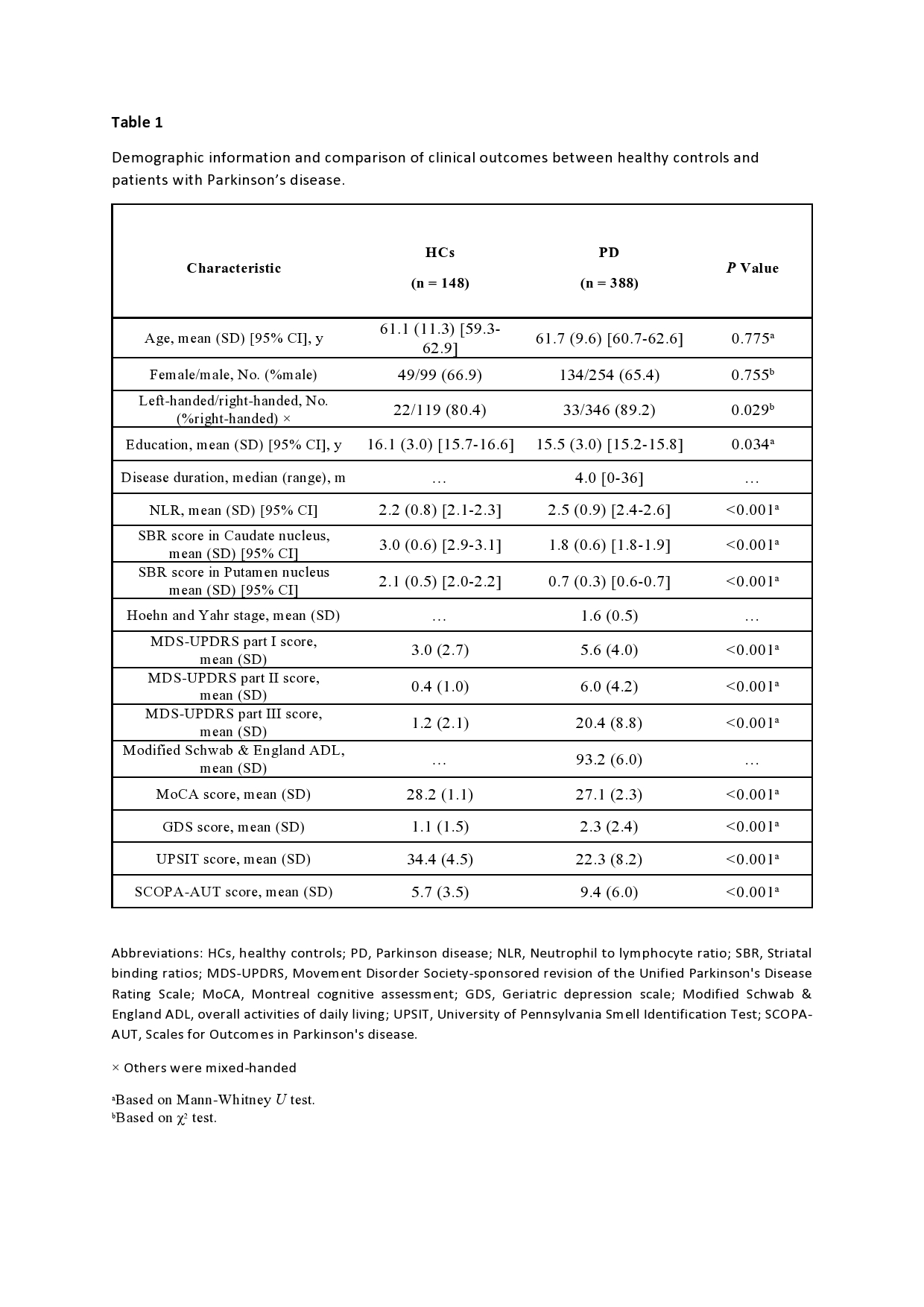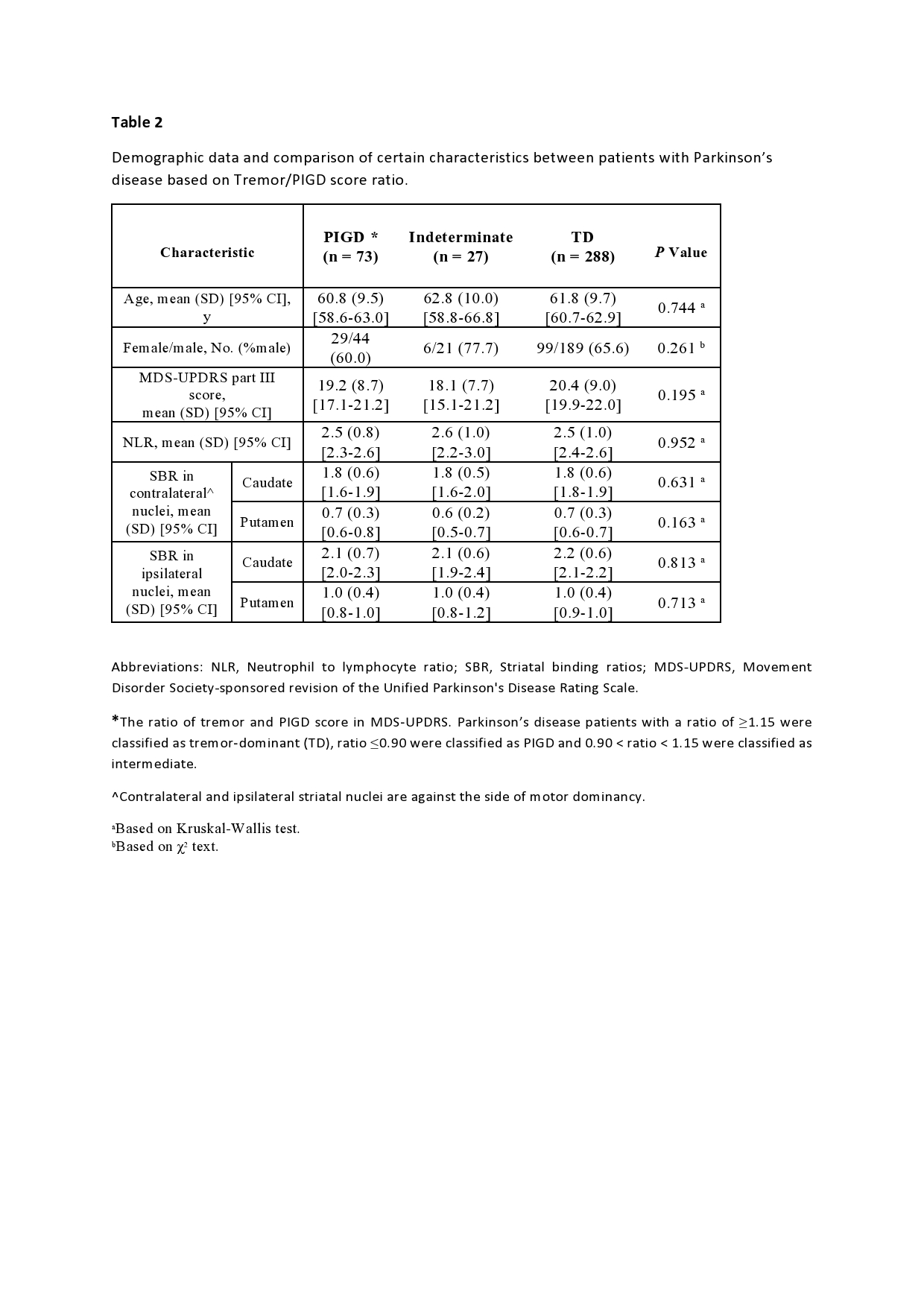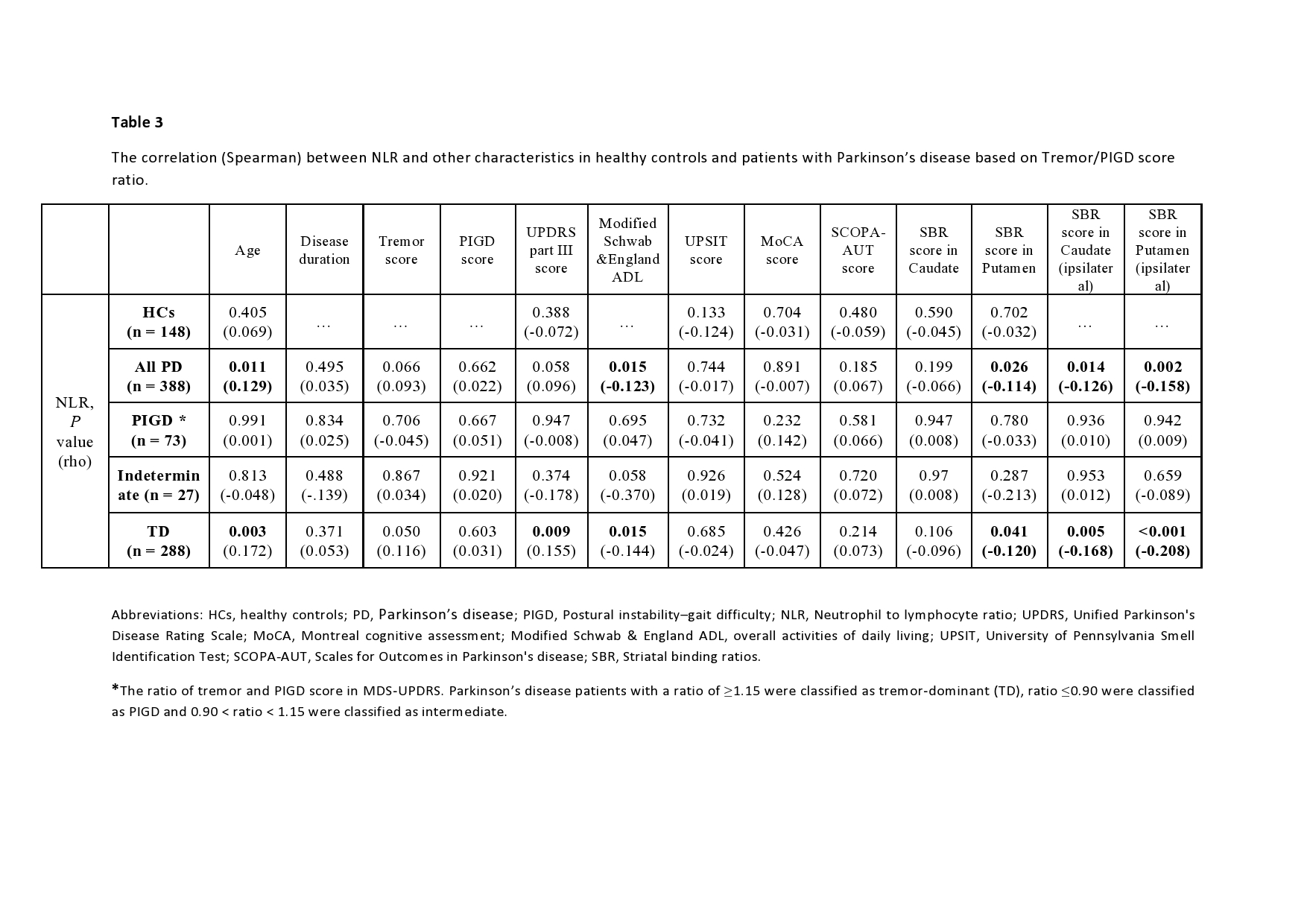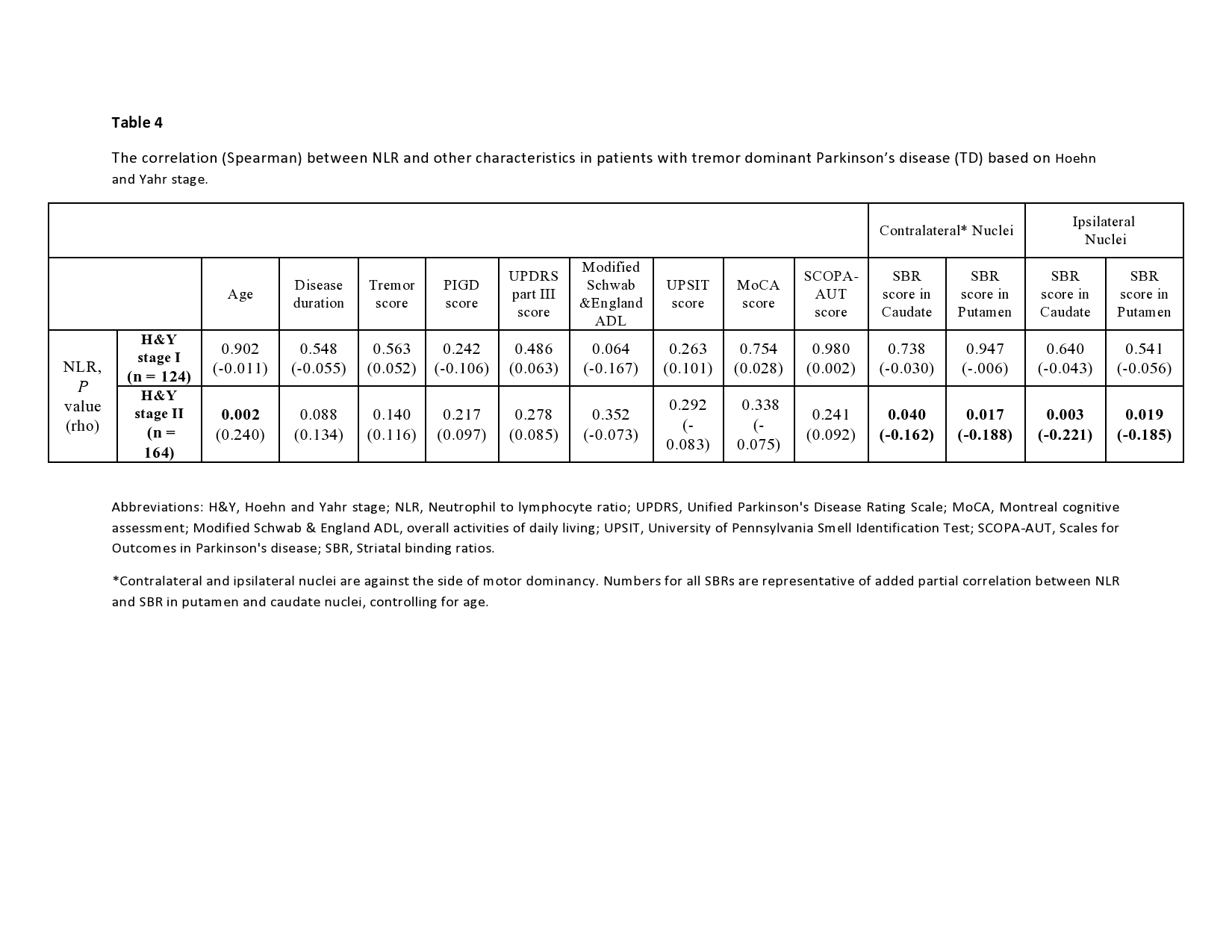Session Information
Date: Monday, October 8, 2018
Session Title: Parkinson's Disease: Neuroimaging And Neurophysiology
Session Time: 1:15pm-2:45pm
Location: Hall 3FG
Objective: This work was designed to investigate peripheral inflammation in terms of Neutrophil-Lymphocyte ratio (NLR) concerning loss of dopaminergic uptake in caudate and putamen on Dopamine Transporter Single Photon Emission Computed Tomography (DaTscan) images, which signifies the dopaminergic activity, among treatment-naïve early PD patients with different motor phenotypes and severities.
Background: The interplay between peripheral and central inflammation has a significant role in dopaminergic neural death in nigrostriatal pathway, although no direct assessment of inflammation has been performed in relation to the dopaminergic neuronal loss in striatal nuclei.
Methods: In this study, the correlation of NLR as a marker of peripheral inflammation to striatal binding ratios (SBR) of DaTscan images in bilateral caudate and putamen nuclei were calculated in 388 drug-naïve early PD patients (288 tremor-dominant (TD), 73 postural instability and gait difficulty (PIGD), and 27 intermediate) and 148 controls ( Table 1,2).
Results: NLR was significantly higher in PD patients than age and sex-matched healthy controls. NLR showed a negative correlation with SBR in bilateral putamen in all PD subjects. Among our three subgroups, only TD subgroup showed remarkable results. A positive association between NLR and motor severity was observed in TD subgroup (Table 3,4). Besides, NLR could negatively predict the SBR in ipsilateral and contralateral putamen and caudate nuclei in tremulous phenotype. Nonetheless, we found no significant association between NLR and other clinical and imaging findings in PIGD and intermediate subgroups, supporting the presence of distinct underlying pathological mechanisms between tremor and non-tremor predominant PD at early stages of the disease.
Conclusions: We demonstrated that NLR can negatively predict SBR in bilateral putamen and caudate nuclei of TD group, and more specifically in stage 2 (H&Y) TD patients. Not observing such association in non-tremor predominant PD patients points to the different pathophysiology mechanisms between tremor and other motor symptoms in PD. Making a bridge between inflammation and neurodegeneration, it is suggested that peripheral inflammation can potentially contribute to the initiation and progression of PD, particularly the process of dopaminergic depletion in striatal regions. However, this relation between peripheral inflammation and parkinson progression is not conclusive. Much more studies are required to further investigate this subject.
To cite this abstract in AMA style:
H. Sanjari Moghaddam, F. Ghazi Sherbaf, M H. Aarabi, M. Mojtahed Zadeh. Association between peripheral inflammation and DATSCAN data of the striatal nuclei in different motor subtypes of Parkinson Disease [abstract]. Mov Disord. 2018; 33 (suppl 2). https://www.mdsabstracts.org/abstract/association-between-peripheral-inflammation-and-datscan-data-of-the-striatal-nuclei-in-different-motor-subtypes-of-parkinson-disease/. Accessed December 30, 2025.« Back to 2018 International Congress
MDS Abstracts - https://www.mdsabstracts.org/abstract/association-between-peripheral-inflammation-and-datscan-data-of-the-striatal-nuclei-in-different-motor-subtypes-of-parkinson-disease/




